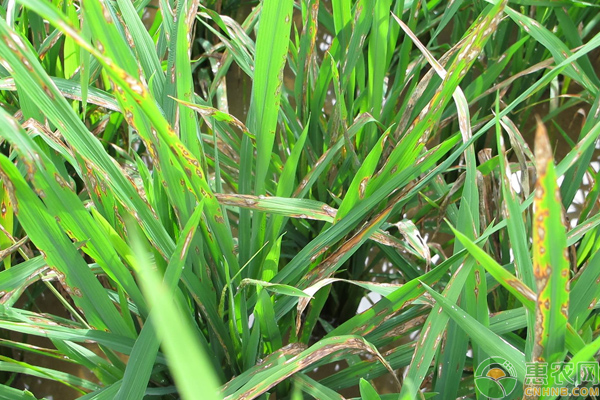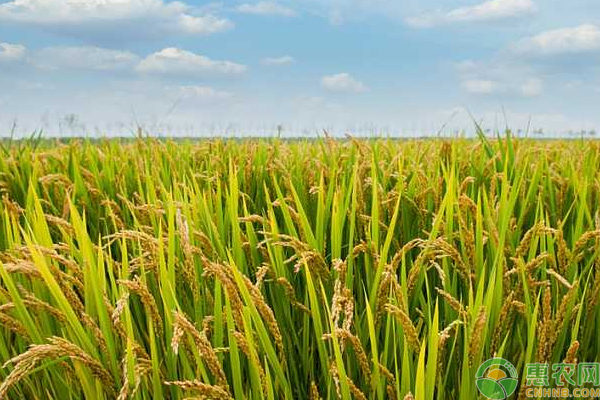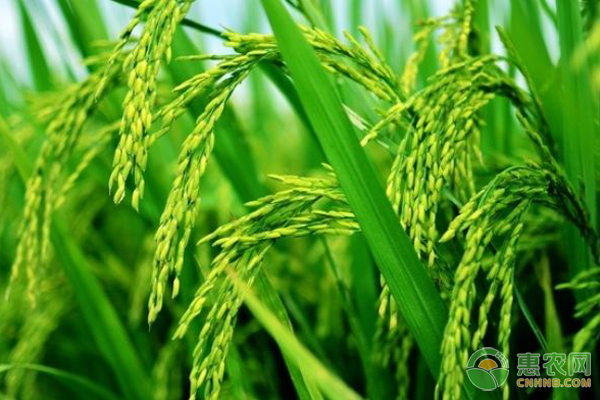How to control rice sheath blight? Causes and Control of Rice sheath Blight in South China
Sheath blight is a common disease in rice planting, and its damage is great. Once it is not prevented in time, it will cause rice to wither and die, endangering rice production, so what is the cause of rice sheath blight? The following is a detailed description of the causes and preventive measures of rice sheath blight. I look forward to giving some assistance to you growers.

1 causes of rice sheath blight
The pathogen of rice sheath blight is mainly Rhizoctonia solani. Under the basic standard, the fungus has no color at the beginning and shows light brown sclerotia at maturity. The sclerotia of the pathogen has strong drought resistance and can survive in a variety of extreme natural environments, which is the main pathogen induced by the large-scale spread of rice sheath blight. In addition, the relative density of paddy rice planting is too high, poor fertilizer and water management methods, and unscientific preventive measures of therapeutic drugs are all caused by sheath blight and endanger the control effect.
2 characteristics of rice sheath blight caused by 2
Rice sheath blight is a disease caused by high temperature, high and low temperature standards. when the temperature of the rice growing area continues to rise (about 20 ℃, when the environmental humidity is 80%), the sheath blight begins to appear and spread gradually. When the temperature in the planting area exceeds 25 ℃ and the air humidity exceeds 90%, the rapid spread of the disease will continue to accelerate. The medium-and long-term water storage in rice planting fields and the high environmental humidity provide the basic standard for the large-scale production and spread of sheath blight. If too much base fertilizer is added in the whole process of fertilizer management, it will be early closure of grain seedlings and promote the production of sheath blight. Under all normal planting conditions, the specific disease resistance and prevalence rate of different species are different, the prevalence rate of tall rice is lower, and the disease incidence of dwarf rice is more serious.
3 basic symptoms of rice sheath blight caused by
Sheath blight causes different levels of damage to petiole, leaf, panicle and leaf stem of rice. The key to the initial production lies in the position of the leaves and petioles of the main stem close to the water surface. During the whole process of infection in the early stage of rice, most of the disease parts showed dark green immersion-like blurred black spots, which gradually improved the moire shape after further spread. The middle part of the spot will appear light green or dark red, and after the rice mechanism is destroyed, the edge will show dark brown. When the disease is more serious, several smaller spots will cause large spots, causing the leaves to turn yellow and then slowly wither. The damage condition of stem is similar to that of leaf. When the panicle is damaged, it will show dark green at first, and with the increase of damage, it will show dark red, and the rice can not heading normally. In the natural environment of growth and development of high temperature and high temperature, the sclerotia will appear in the location of sheath blight, and the sclerotia is dark, so it is very easy to fall off.
4. Occurrence regularity of rice sheath blight at 4 .
Rice sheath blight is a Candida disease. The sclerotia of the pathogen overwinters in the natural environment such as cultivated soil, straw disease, weeds and so on, which is the basic pathogen of the disease. When arable land is carried out in spring, most of the sclerotia that successfully survive the winter float on the water and then adhere to the main stem of rice. When the geographical environment is suitable, sclerotia will continue to sprout, produce fungi, infect rice, and cause rice disease, while under high temperature, high and low temperature standards, it can cause an outbreak of rice sheath blight influenza. After rice planting, the disease occurs too early, too much and too serious, which is a common phenomenon in today's rice area.
Comprehensive Prevention measures of Rice sheath Blight with 5
5.1 selected species with good disease resistance
The key to rice planting depends on the selection of rice species, because good species can block diseased bacteria and reduce the probability of diseases. According to the practical activity science research, the thickness of fruit wax protective layer on the main stem of indica rice is thicker, there are more silicified substances, and the specific disease resistance of indica rice is good, followed by indica rice, and glutinous rice is the worst. In the same planting natural environment, the disease resistance of mature species is low, and the disease resistance of late-maturing species is good.
5.2 immediately eliminate the pathogen
Before rice seedlings are planted, the sclerotia floating on the surface of the rice field must be picked up immediately so as to reduce the number of bacteria sources in all directions. The operation process is as follows: rake the field according to the high water mark (water mark aspect ratio 3.3 to 6.6 cm), make the sclerotia float on the water surface, and stay for a period of time, make the dry branches, weeds, sclerotia and other waves floating in the water float and concentrate to the lower corners and edges of the field, immediately pick up the dry branches, weeds and sclerotia floating on the water surface according to the sediment net and other special tools. Then it can be damaged, and then the total number of bacteria can be controlled reasonably, and the early, middle and late, light and severe onset of early disease can be reasonably controlled.
5.3 fertilizer and water management methods and countermeasures
The standard of fertilizer on the street side of rice is dominated by bottom fertilizer, which can be fertilized immediately according to the regularity and specific conditions of rice growth and development. The base fertilizer is dominated by organic fertilizer, and the organic matter in the soil is moderately filled with organic fertilizer, and the standard is to manipulate the base fertilizer and topdressing phosphorus and potassium fertilizer. Fertilization is dominated by topdressing and heading fertilizer, which should be carried out after the seedlings turn green, that is, 7-10 days after transplanting, early rather than late. The amount of fertilizer applied accounts for about 20% of the fertilizer level.
5.4 choose other effective planting management methods and countermeasures
Cultivating strong seedlings, reasonable close planting and transplanting basic seedlings by a third party are not only the key supporting devices to maintain disease resistance, yield increase and high quality of rice, but also reasonable countermeasures for comprehensive prevention of sheath blight.
In addition, growers should apply sufficient base fertilizer, effective fertilization, topdressing phosphorus and potassium fertilizer, and not partial application of base fertilizer, which can not only promote the growth and development of rice, but also improve the working ability of stress and disease resistance of rice.
5.5 Chemical Control measures of
The development trend of rice sheath blight is relatively slow in the early stage of the disease, and rapid in the middle and later stage of the disease, in order to control the disease condition and prevent it immediately. In the tillering stage, when it is found that the disease cluster rate reaches 5% to 10%, you can just start taking medication to prevent it. The development trend of disease at booting stage and heading stage of large fetus is rapid, so it is necessary to improve prevention and control the development trend of disease. Jinggangmycin granule, benzopropiconazole EC, hexazolol suspension and other chemical fertilizer and water sprayer can be used in basic medicine. each spray must be applied twice continuously, and then the second time should be applied about 7 days after the first spraying, and then the excellent control effect can be obtained. In addition, pay attention to adding more water when spraying, so that a certain amount of water can be sprayed into the lower end of the main stem to improve the control effect.
Rice sheath blight is caused by Rhizoctonia solani, and when the disease occurs, it spreads quickly, and if it is not prevented in time, it will hurt a whole rice field, so you must cause planting when planting. Above is about the causes and prevention measures of rice sheath blight in southern China, and growers can follow suit.
Related
- The first cup of black tea in spring, the flavor and history of tea gardens in Kenya, Africa
- The computer can not only choose potatoes, but also grow tea rice. AI will grow winter oolong tea champion.
- It is not only the inflated tea bitten by insects, but also engraved with the four seasons tea in Beipu.
- The Oriental Beauty Tea Festival in Zhuxian County takes the stage at the weekend to experience the plus-size feast of oil tea.
- & quot; Oriental Beauty Tea & Exploration of Emei in Hsinchu, the hometown of quot;
- The new variety of strawberry "Tainong 1" dessert is the first choice with mellow aroma. Crimson gorgeous
- History of Tea in Taiwan: from Wild Inner Mountain to Export Tea Garden
- Two types of Taiwan Oriental Beauty Black Tea won the British three-Star Award for Childhood Tea Xiang Zhang Jiaqi changed from pilot to champion tea maker.
- Banana species and varieties: the planting history of Taiwan Xianren banana and dwarf banana is long, is banana disease resistant?
- Coffee planting Technology: Qianjie Coffee from Seedling to harvesting



